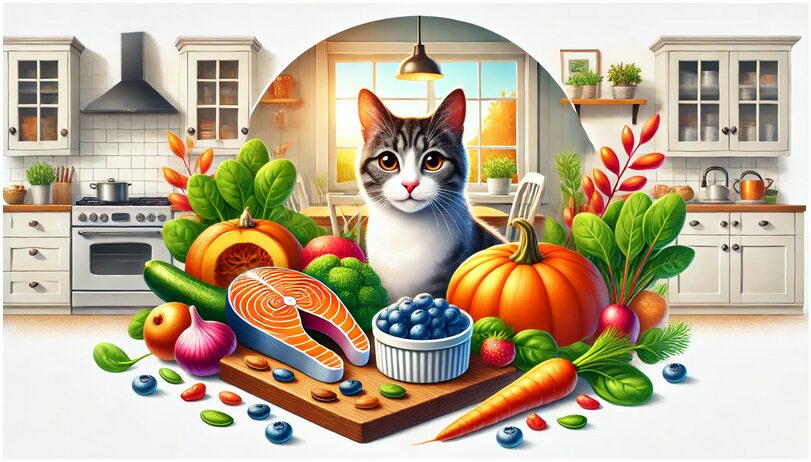When people hear the term “pedigree cat,” they often envision regal felines with luxurious coats, unique features, and well-documented lineages. But what exactly does it mean for a cat to be a pedigree? How are new pedigrees established, and what are some of the newest feline breeds in the world of pedigree cats? Let’s explore these fascinating topics.
What Is a Pedigree Cat?
A pedigree cat is one that belongs to a specific breed recognized by a cat registry or association, such as The International Cat Association (TICA), The Cat Fanciers’ Association (CFA), or regional organizations like the Governing Council of the Cat Fancy (GCCF) in the UK. These cats are bred according to strict standards that dictate their physical characteristics, temperament, and overall health.
Requirements for Pedigree Cats:
- Documented Lineage: Pedigree cats have a detailed family tree tracing their ancestry back multiple generations, showing that all ancestors belonged to the same breed.
- Breed Standards: Each breed has a standard describing the ideal physical traits (e.g., coat color, eye shape, body size) and personality expected of the breed.
- Registration: Pedigree cats must be registered with a recognized cat registry. This documentation certifies the cat’s breed status and lineage.
How Are New Pedigrees Created?
Creating a new pedigree breed is a meticulous process requiring patience, expertise, and dedication. Here’s an overview of the steps:
- Identify Desired Traits: Breeders often start by identifying specific physical or behavioral traits they wish to develop, such as a unique coat pattern, ear shape, or temperament.
- Select Parent Breeds: Breeders choose existing breeds (or domestic cats) with the desired characteristics and begin a controlled breeding program.
- Establish Consistency: Over several generations, breeders work to ensure that the desired traits consistently appear in offspring. This process involves genetic testing, careful selection, and monitoring for health issues.
- Apply for Recognition: Once a new breed shows consistent and predictable traits, breeders can apply for recognition with cat registries. This involves providing extensive documentation, including photographs, lineage records, and health data.
- Provisional Status: Many registries first grant provisional status, allowing breeders to showcase the new breed at exhibitions. This step helps generate interest and further refine the breed.
- Full Recognition: After meeting the registry’s criteria, the new breed may achieve full recognition, earning the title of a pedigree breed.
Recently Created Pedigree Breeds
The cat fancy is constantly evolving, and several new breeds have emerged in recent decades. Here are a few examples:
- Lykoi (2011)
Known as the “werewolf cat,” the Lykoi has a sparse, patchy coat and a feral appearance that sets it apart. This breed originated from natural mutations in domestic shorthair cats and was refined by breeders for its distinctive look. - Toyger (2007)
This striking breed resembles a miniature tiger, thanks to its bold, striped coat. Developed by breeding domestic cats with Bengals, the Toyger was created to promote awareness of tiger conservation. - Kinkalow (1990s)
A hybrid of the Munchkin and American Curl breeds, the Kinkalow combines short legs with curled ears, creating a unique and playful appearance. - Australian Mist (1980s)
Originally known as the Spotted Mist, this breed hails from Australia and features a marbled or spotted coat. It was created by crossing Burmese, Abyssinian, and domestic shorthair cats to develop a family-friendly, adaptable feline.
Why Create New Pedigree Breeds?
The creation of new breeds allows breeders to explore feline genetics, create cats with specific traits, and preserve diversity in the domestic cat population. However, it’s essential for breeders to prioritize health and well-being over aesthetics to avoid perpetuating genetic disorders or health challenges.
Challenges in the World of Pedigree Cats
While pedigree cats are prized for their beauty and predictability, the selective breeding process can sometimes lead to health issues, such as hip dysplasia in Maine Coons or polycystic kidney disease in Persians. Responsible breeders work hard to mitigate these risks through genetic testing and ethical practices.
Additionally, not all cat enthusiasts support the creation of new breeds, as some argue that it diverts attention from rescuing and adopting cats in need of homes. This debate highlights the importance of balancing the preservation of pedigreed breeds with promoting animal welfare.
Conclusion
The world of pedigree cats is rich with history, innovation, and dedication. Whether you’re drawn to the classic elegance of an established breed like the Siamese or intrigued by the exotic look of newer breeds like the Lykoi, there’s no denying the allure of these remarkable felines. By understanding the process of creating and maintaining pedigree breeds, cat lovers can better appreciate the artistry and responsibility behind these beloved companions.
If you’re considering adding a pedigree cat to your family, research the breed thoroughly, choose a reputable breeder, or consider adopting through breed-specific rescues. After all, every cat—pedigree or not—deserves a loving home.










